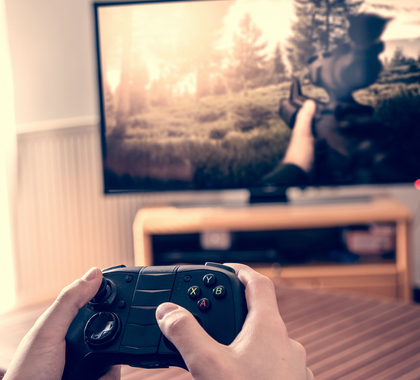Almost like clockwork after a tragedy of gun violence, special interests begin pointing fingers. One of the regular targets of such finger pointing is the video game industry. Rather than looking to solve problems, all too predictably there are those who look to exploit the heartbreak of others. The evil perpetrated in Parkland, Florida resulted in the same, although compared to Sandy Hook this time the reactions were a bit more reasonable.
Back then, just days after the horrendous shooting, then-Senator and chairman of the Senate Commerce Committee, Jay Rockefeller, did not miss the opportunity to exploit the situation by calling for a study of video game violence and its effects on children. Not to be shoved down a step on the grandstand, then Vice -President Joe Biden called for more studies to see if any evidence could be found linking violent video games to real life violence, despite the fact that studies show there is no scientific proof linking the two. The goal seemed to be to simply keep calling for a study until one produced a result he liked. Joe Biden was just playing games.
This time President Trump held a meeting at the White House with video game executives and watchdog groups, and to the credit of the White House, attendees reported that no planned actions were announced. Hopefully this is a sign that the political class is beginning to appreciate the facts.
The facts:
- Study after study has shown that there is no causal link between video games and violence. Similarly, no causal link has been found media violence and violent crime.
- Exactly during the time that video game sales and popularity have exploded, violent crime has dramatically decreased.
- The U.S. Supreme Court, U.S. Surgeon General, Federal Communications Commission and the Federal Trade Commission studied the scientific record and did not find a causal link between violent programming and violent behavior.
- The average game player is 35 years old.
- A whopping 90 percent of time parents are present when children are buying or renting videogames.
- Ninety-four percent of the time parents are monitoring the content of the games their children are playing.
- Parents report that existing voluntary video game industry standards and the restrictions on sales put in place by the industry are helpful, accurate and reliable. The ESRB system that has long been hailed in many quarters as the standard to be followed for industry responsibility and self-regulation.
- New video game consoles include parental controls that limit access to games based on the ESRB ratings. Ninety-four percent of parents find these controls useful.
The focus on emotional leaps and assumptions, such that video games lead to gun violence, only result in one thing, that is, real solutions to protecting our children are ignored. Where video games are concerned, parental responsibility is the key. No amount of liberty limiting laws will meet the challenge. All credible research makes the same point: The key to protecting kids is a multilayered approach combining technology, law enforcement, caregiver oversight and private educational efforts such as the voluntary rating system.
Parents overwhelmingly understand their roles and are acting appropriately. Blaming entertainment software for violence and even specific violent acts, seems to a game that is only played in Washington by special interests and grandstanding politicians




